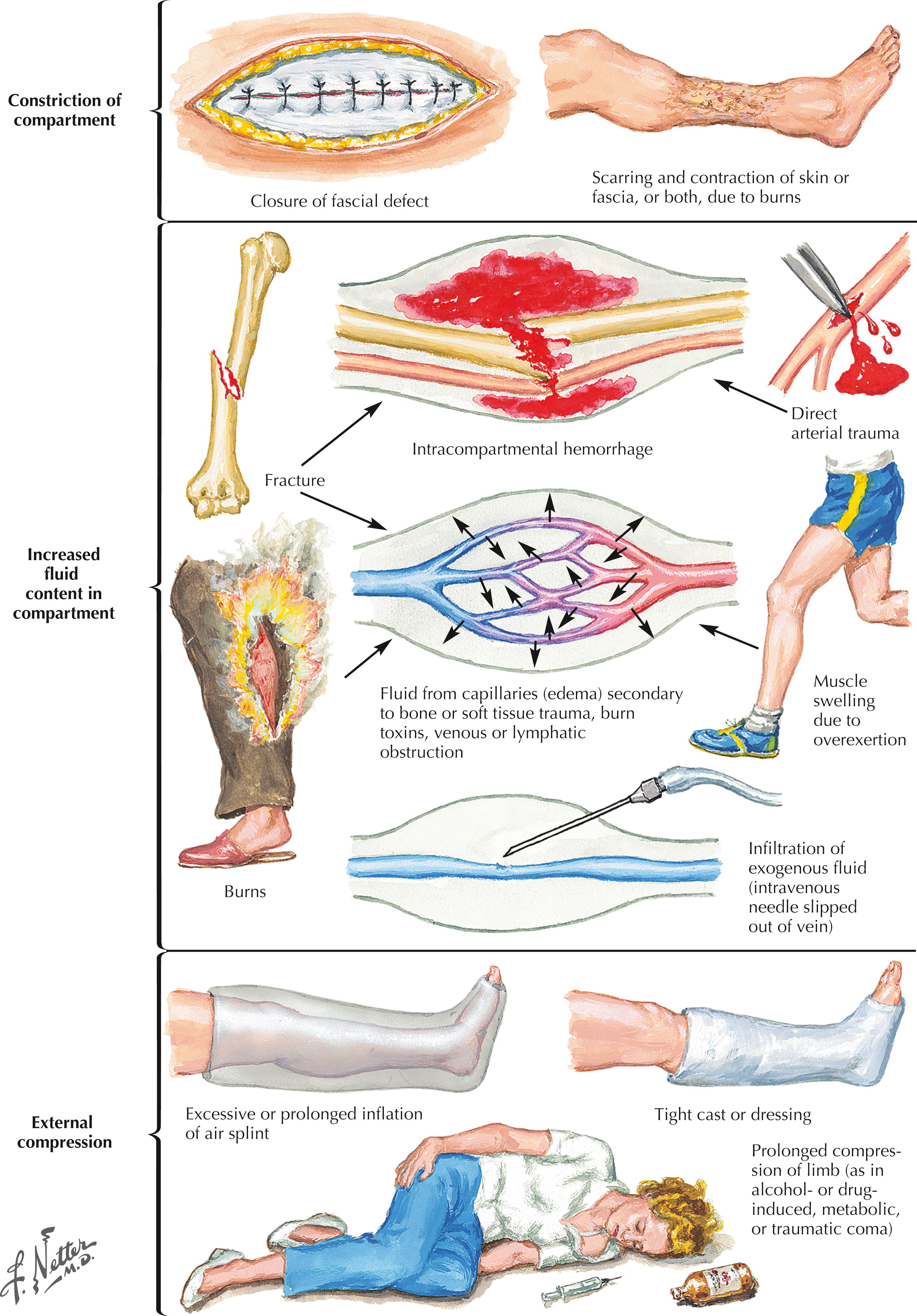Physical Address
304 North Cardinal St.
Dorchester Center, MA 02124
Compartment syndrome of any extremity is a limb-threatening condition that must be recognized and treated in a timely fashion. Left untreated, compartment syndrome can lead to not only limb loss or functional impairment of the affected limb but also systemic consequences such as renal failure, worsening acidosis, and death.
Compartment syndrome is seen in both the upper and lower extremities, and the etiologies are similar. Blunt trauma leading to fractures and direct muscle injury, expanding hematomas, external compression, fluid extravasation, infection, reperfusion, and severe burns are some of the more common causes of compartment syndrome. Fasciotomy of the affected compartments is the definitive treatment of true compartment syndrome and must be performed in a timely fashion to prevent ongoing tissue injury.
Compartment syndrome occurs when the pressure in the affected compartment rises above the pressure within the vessels of that compartment, leading to inadequate tissue perfusion. In the confines of a fixed space when the pressure is greater than 30 mm Hg, both capillary perfusion and venous outflow are impeded. Without timely intervention, this leads to tissue death.
Increased compartmental pressure can be due to constriction of the compartment, such as from fascial closure or contraction of the overlying skin because of scarring ( Fig. 54.1 ), or external compression, such as from tight casts or dressings. Prolonged downtime with compression of a limb as seen in metabolic comas or traumatic falls can also lead to elevated compartmental pressure (see Fig. 54.1 ). Another common etiology of compartment syndrome is increased volume of fluid within the space. This can be due to a number of causes, including bleeding, infiltration of exogenous fluid such as intravenous (IV) extravasation (either from intravenous catheters in the upper extremity or intraosseous catheters in the lower extremity that have slipped from their intended positions), capillary leakage from reperfusion injury, severe burns, trauma (especially crush injuries), venous or lymphatic obstruction, or muscle swelling from overexertion (see Fig. 54.1 ). Reperfusion injury is commonly seen after revascularization procedures and trauma, and the concern is heightened if the limb was ischemic for greater than 4 to 6 hours. Prophylactic fasciotomy should be considered in these patients.

Become a Clinical Tree membership for Full access and enjoy Unlimited articles
If you are a member. Log in here